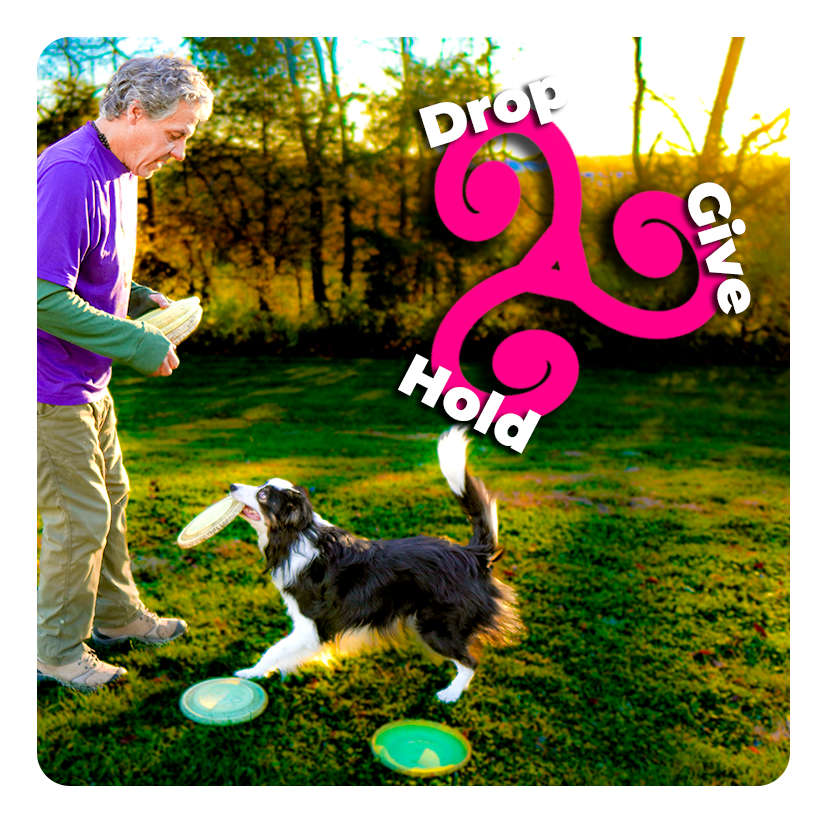Is Eppie Waiting to Drop It? Give It? Or Is He Actively Holding It?

Drop – Teeth Off Makes Cookie Happen
the criteria for the Drop is teeth off, nothing more. If you cue Drop and the teeth come off, a cookie should happen. the dog needs to believe that teeth off, on cue, makes the cookie happen.
Teeth off is the Drop criteria. It is a mistake to combine teeth off and teeth off and don’t go after it again or something like that. The criteria is teeth off. Mark it and reward it smartly in a place that clears up the problem and it will be reinforced and you won’t need to stop the dog from doing it, as the dog will be looking for the cookie.
It doesn’t matter what the dog’s intrinsic or internal motivation is for hitting the criteria. It just matters that the criteria is hit. This clarity will help to prove that the teeth off, on Cue, make the cookie happen.
Give – Teeth Off in the Hand Makes Cookie Happen
the criteria for the Give is to drop it in the handler’s hand. all Gives are Drops, but not all Drops are Gives. this little logical rift is a common problem for bite and drop mechanics. be sure to have a distinct verbal cue for each and play them off one another.
The single minded focus on the goal is a problem with Bite | Drop | Give and basic DiscDog Mechanics. If the dog does a good Give but a crappy drop, the tendency is to work on the crappy Drop, like a lot. And it makes sense because, you know, it’s crappy. This means that the Dog | Handler | Team are doing a lot of crappy work and not getting a lot of success. Sounds like fun, right!?
Instead of working on the problem behavior directly, use the good one that is related to it, in this case the Give. I can use my excellent Give 5x in a row to make it feel like we’re playing. Then I put the Drop on him and wait. The game pauses… Yes! and then we go back to the Gives.
Now the problem behavior is but a hiccup in the game and we’re getting all the same behaviors that overlap between Drop and Give exercised with low latency. The dog will put them together.
Hold – Am I Gonna Drop or Am I Gonna Give?
these three behaviors are tied up in a vicious backchain. the Hold behavior is not a behavior at all it is the dog waiting to figure out whether it is going to be a Drop or a Give that makes the next thing happen.
If you have a strong Give and a strong Drop, then your dog is performing a Hold. If your dog is not performing a good Hold then the path to that good Hold is through the Give and Drop. The End.



